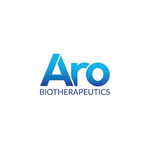Investigational, next-generation therapy for Pompe disease delivers GYS1 siRNA to muscle tissue
Phase 1a safety and bioactivity data in normal healthy volunteers supports moving into first-in-patient LOPD trial
PHILADELPHIA--(BUSINESS WIRE)--Aro Biotherapeutics, a clinical-stage biotechnology company working to develop potent and tissue-targeted medicines, today announced the initiation of the Phase 1b portion of its clinical trial of ABX1100, a novel potential treatment for late-onset Pompe disease (LOPD). By targeting a known receptor called CD71, ABX1100 delivers siRNA therapy to muscle tissue, where it inhibits the production of the GYS1 enzyme, which is responsible for synthesizing glycogen. In the planned 1b study, investigators seek to enroll adults with LOPD to evaluate the safety and bioactivity of ABX1100. More information about the trial is available at ClinicalTrials.gov using the identifier NCT06109948.
“The limitations of enzyme replacement therapy for Pompe disease underscore the need for new therapies with novel mechanisms of action,” said Aneal Khan, MD, principal investigator of the trial and a pediatrician and medical geneticist at the Metabolic and Genetic in Calgary (MAGIC) Clinic in Alberta, Canada. “ABX1100 is being evaluated as a new therapeutic approach for individuals with late-onset Pompe disease, and we are eager to begin this trial in the underserved Pompe disease population.”
Pompe disease is a rare neuromuscular disorder driven by the toxic buildup of glycogen, a stored form of sugar used for energy, in the muscle. This over-accumulation of glycogen leads to progressive loss of muscle function, weakness, and disability that can eventually progress to death from respiratory failure.1 Currently available enzyme replacement therapies (ERTs) for Pompe disease have limited long-term efficacy. Preclinical studies suggest that inhibiting the production of GYS1 may be a valuable addition or alternative to ERT.
“The encouraging preclinical and clinical evidence generated to date provides a solid foundation for ongoing clinical studies of ABX1100, which has the potential to be the first new treatment for Pompe disease beyond ERT. We anticipate dosing the first patient with Pompe disease in the Phase 1b study before the end of 2024,” noted Susan Dillon, Ph.D., co-founder, president and chief executive officer of Aro.
“ABX1100 was well tolerated in a recently completed Phase 1a trial conducted in normal healthy volunteers, and it showed durable GYS1 mRNA knockdown in muscle biopsies, with effects lasting through at least 10 weeks following a single dose,” added Dr. Dillon. “The study achieved the goal of identifying a safe and effective starting dose for studies in patients with LOPD. We plan to present the Phase 1a results at a future medical conference.”
About ABX1100
ABX1100, an investigational treatment for Pompe disease, is comprised of a CD71 receptor-binding Centyrin conjugated to a small interfering RNA (siRNA) that specifically interferes with expression of GYS1 messenger RNA (mRNA), thereby reducing levels and overall activity of the GYS1 enzyme in muscle tissues. ABX1100 demonstrated a favorable safety profile in toxicology studies, with durable reductions in GYS1 mRNA in muscles, supporting the potential for quarterly dosing. ABX1100 has received Orphan Drug Designation and Rare Pediatric Disease status from the United States Food and Drug Administration (FDA).
About Aro Biotherapeutics
Aro Biotherapeutics is a biotechnology company working to develop potent and versatile tissue-targeted genetic medicines with a platform based on a proprietary protein technology called Centyrins. The company is developing a wholly owned pipeline of Centyrin-based therapeutic candidates for tissue-specific targeting of therapeutics for a diverse set of diseases. For more information, visit www.arobiotx.com.
Reference
- Pompe disease. U.S. Department of Health and Human Services, National Institutes of Health, National Institute of Neurological Disorders and Stroke (NINDS); 2024. https://www.ninds.nih.gov/health-information/disorders/pompe-disease#:~:text=What%20is%20Pompe%20disease%3F,the%20heart%20and%20skeletal%20muscles. Accessed October 15, 2024.
Contacts
SmithSolve
Matt Pera
(219) 628-0258
Matt.Pera@smithsolve.com






